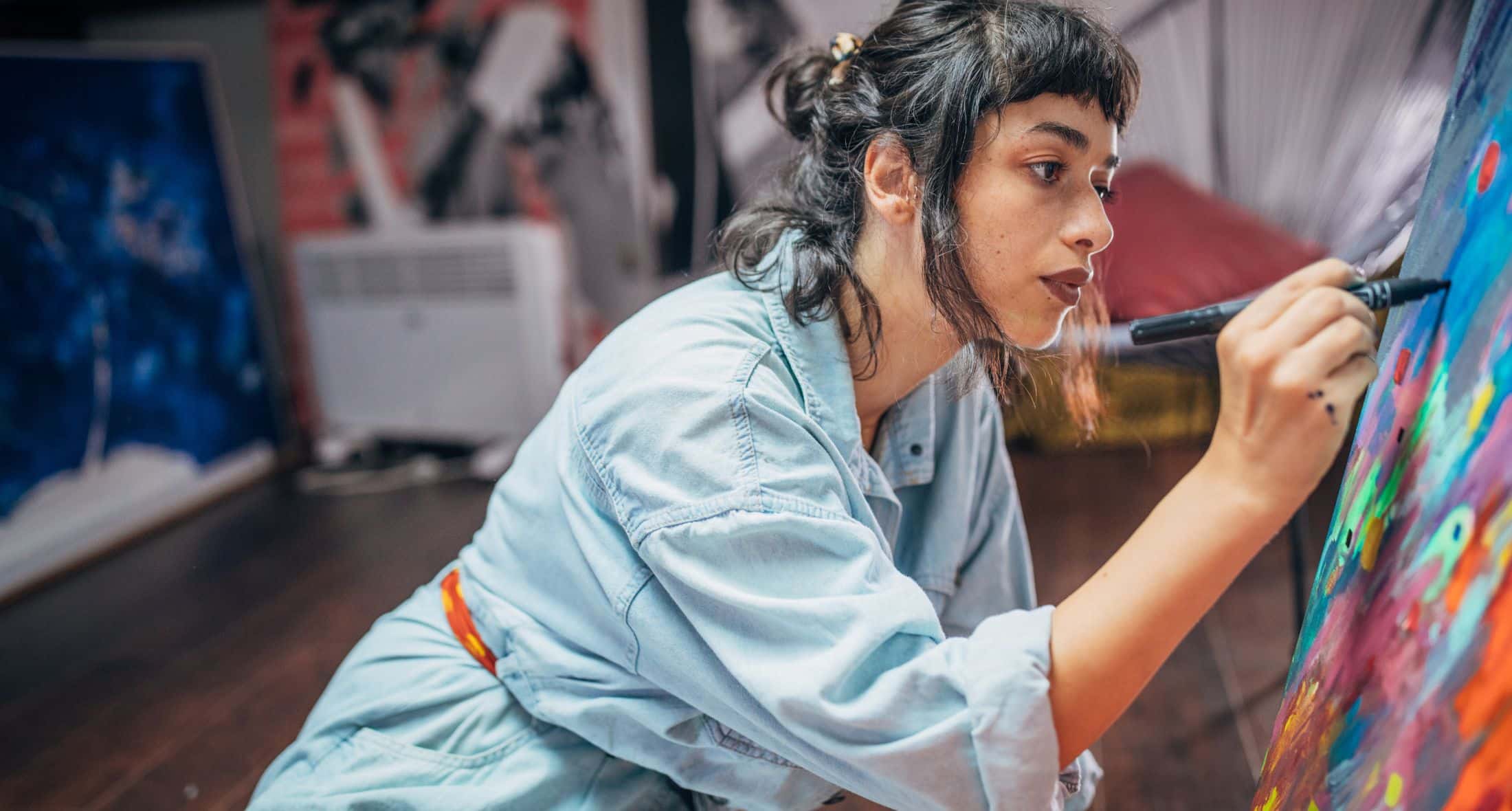Almighty Productions

Management Summary
Producing advertising material shouldn’t just be about creating visually appealing content. It should also be about planning for adaptability.
In today’s advertising landscape, creatives need to work seamlessly across mediums, platforms, formats, and even orientations.
A campaign should be able to perform well not only as print and classical advertising, but it should also shine on TikTok, Instagram, and even for the emerging Connected TV format. This requires foresight during the production stage to ensure every frame, angle, and cut can be repurposed for diverse uses.
At e-dialog, where digital-first strategies take center stage, we understand the importance of producing material that can thrive in digital environments while also accommodating classical formats.
This article aims to provide proven tips, workflows, and examples to help you create versatile and future-proof productions.
Understanding Format Needs
Adaptability across formats is essential for maximizing the reach and effectiveness of your campaigns. Each format, portrait, landscape, and square, has distinct roles in both classical and digital advertising, and understanding these differences is the first step to future-proof productions.
Portrait Formats
Portrait Formats dominate vertical-first platforms like TikTok, Instagram Stories, and Reels, where content needs to fill the screen entirely to capture attention. For instance, if filming a fitness ad, center the trainer in the frame with enough room above and below for text overlays. This allows for seamless adaptation to vertical ads without losing critical elements.
Key Challenges: Adapting widescreen shots for vertical platforms often leads to cropped or awkward visuals.
Best Practices: Use multi-camera setups to simultaneously capture vertical and horizontal frames or keep key subjects centered for flexibility during post-production.
Landscape Formats
Essential for platforms like YouTube, Connected TV, and even classic advertising, landscape formats offer a more cinematic feel. They’re ideal for narratives and content that rely on expansive visuals or detailed storytelling.
Key Challenges: Designing cinematic visuals that also feel engaging on smaller screens like desktops or smartphones in landscape orientation.
Best Practices: Focus on dynamic shots with clear focal points and avoid excessive clutter that may lose impact when scaled down.
Square Formats
A versatile choice for Instagram and Facebook feeds, square formats strike a balance between vertical and horizontal designs. This format often achieves higher engagement as it optimizes screen space while maintaining user focus.
Key Challenges: Balancing the compact, symmetrical layout with a high level of detail.
Best Practices: Ensure square format assets are designed with a strong focus on central alignment to maximize visibility and engagement. Keep key elements within the central 80% of the frame, leaving a buffer around the edges to prevent cropping issues on feeds or screens. Avoid excessive peripheral details, as they may be cut off or overlooked when viewed on smaller devices. For example, in a product ad, position the product prominently in the center, surrounded by minimal but complementary design elements to avoid clutter.
Classical and Digital Advertising Differences
The gap between classical and digital advertising lies in how audiences consume content.
Classical formats like posters, billboards, and magazine spreads prioritize static, high-resolution visuals designed for long-term display and high-impact visibility.
Digital platforms, on the other hand, demand dynamic, interactive, and motion-based storytelling that captures attention in a fraction of a second.
Bridging these needs requires a strategic production approach that caters to both formats without duplicating efforts or inflating budgets.
Key Differences to Consider
Resolution and Scale: Classical advertising assets require ultra-high-resolution imagery to maintain clarity when scaled up for large-format printing (e.g., billboards or building wraps). Digital assets, while also requiring high resolution, must focus on adaptability to varying screen sizes, from desktops to smartphones.
Static vs. Motion: Digital ads, especially on platforms like Instagram Stories or TikTok, thrive on motion-based storytelling with layers of animation, video, and interactivity, and classical ads rely on bold, static visuals to convey messages at a glance, often within seconds as a viewer passes by.
Audience Interaction: Classical ads are typically consumed passively. Viewers observe rather than interact, while digital platforms invite engagement through likes, shares, clicks, or swipes, necessitating content that sparks action.
Bridging the Divide
To ensure productions serve both classical and digital formats seamlessly, consider these detailed strategies.
Resolution and Scale
Plan for Dual Use: During video shoots, frame key moments with the intent of extracting stills that can be repurposed for print ads. For example, a hero image featuring a product in a dramatic setting can double as a billboard visual.
Consistency Across Media: Design assets that maintain brand cohesion across static and motion formats. For instance, ensure the color palette, typography, and logo placement remain consistent, regardless of the medium.
Prioritize Motion for Digital Adaptability
Imply Movement in Static Visuals: Even still images intended for classical use should hint at motion to align with digital campaigns. This can be achieved through dynamic angles, blurred backgrounds, or subjects caught mid-action.
Create Layers During Production: Use techniques like green screens or layered compositions so individual elements (e.g., the product, background, or text) can be animated or repositioned later for digital platforms.
Use Modular Design Principles
Build Assets with Flexibility: Modular designs allow classical visuals to integrate seamlessly into digital formats. For example, create a poster with layered components (e.g., a background, tagline, and product image) that can be repurposed into a dynamic animated banner.
Capture Extra Variants: During photo or video shoots, capture additional variations of the same scene (e.g., alternate poses, angles, or expressions) to ensure there’s enough material for both static and dynamic assets.
Storyboarding for Multi-Format Adaptation
During pre-production, use a storyboard that visualizes how scenes will translate to both classical and digital formats. This ensures nothing gets overlooked in the transition between mediums.
Practical Tips for Adaptable Material
Producing material that works everywhere requires a well planned workflow and strategy.
Here’s how to ensure outputs remain versatile:
1. Pre-Production Planning
Platform Mapping and Flexible Layouts: Identify the primary platforms your campaign will target (e.g., TikTok, YouTube, CTV, Facebook) to understand their general requirements. Use this insight to guide versatile layouts that adapt easily to various formats and orientations. For example, frame shots with ample space around key elements to allow for cropping or resizing without losing visual integrity.
Shot List Design: Develop a comprehensive shot list that accounts for platform-specific needs. Include variations like wide, mid, and close-up shots to accommodate different layouts.
Storyboarding: Use storyboards not just to pre-visualize scenes but to map adaptability across formats. Incorporate platform dimensions into the storyboard to ensure key elements remain visible in vertical, horizontal, and square layouts. Focus on dynamic compositions that keep the action or subjects centered for flexibility.
Modular Content Creation: Think beyond creating a single master cut. Plan modular assets that can be rearranged, resized, or re-edited for different uses. For instance, capture extra B-roll that can serve as fillers for Instagram Stories or background loops for CTV ads, ensuring no footage goes unused.
2. Production Stage
Multi-Camera Setups: Use rigs that capture both vertical and horizontal formats simultaneously. Add guides or overlays to monitors to ensure framing aligns with all intended outputs.
Visual Guides: Employ visual guides or frame overlays on monitors to map out 16:9, 9:16, and 1:1 within the same shot.
Mind the Margins: During filming, use overlays on monitors to define safe zones for different formats. For example, when capturing a recipe demo, frame the chef’s hands and ingredients within a central box to ensure the action is clear in both vertical and square outputs.
Modular Content Creation: Capture additional B-roll tailored to specific platforms or formats and film alternative versions of key scenes to cater to varying audience preferences or ad objectives.
Dynamic Scene Design: Include movement in the frame that can work across formats. For example, a subject walking from the edge toward the center, ensuring flexibility for horizontal and vertical cuts.
Prioritize High Resolution: Always shoot in 4K or higher to ensure flexibility in cropping and resizing. Lower resolutions risk pixelation when repurposed for larger formats like CTV or print.
Flexible Lighting and Backdrops: Use neutral, evenly lit backgrounds that are easy to color grade. This ensures your assets can adapt to different branding needs without re-shooting.
Conclusion
Producing material for today’s multi-platform, multi-format advertising world requires foresight, adaptability, and strategic planning. By integrating workflows that prioritize versatility such as modular designs, flexible layouts, and multi-camera setups, you not only maximize your production’s value but also ensure long-term relevance as formats evolve.
By implementing these proven methods, your productions can deliver consistently good results across platforms.




